‘I coulda’ been a contender’. The immortal words of ex-boxer Terry Malloy, as memorably portrayed by Marlon Brando in On The Waterfront.
In the real world, boxing history is littered with the bodies of fighters who could quite conceivably have achieved legendary status in the sport, but never fulfilled their potential whether through being wronged, injury, bad luck or their own poor judgment.
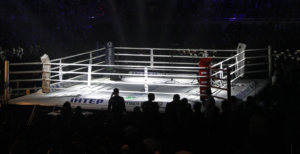
The list of ‘what-ifs’ and ‘could-have-beens’ is countless. Here we present just five of the most prominent examples of wasted talent in boxing within the last four decades.
This is a relative concept and the list therefore includes former amateur stars and world champions; men who by any stretch of the imagination did achieve great things in boxing, but certainly not when measured by their otherworldly ability.
#5: Odlanier Solis
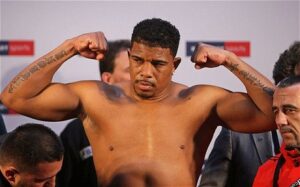
Odlanier Solis was one of the most gifted amateur boxers of his generation; a deadly blend of speed, skill and power. Known as ‘La Sombra’, meaning The Shadow’, the Cuban won gold at the 2004 Olympic Games in the heavyweight category and was thrice a World Amateur Champion; he stopped David Haye in a back-and-forth battle to win the 2001 final and the first of a record three consecutive golds in the tournament.
Solis defected from Cuba in 2006 and landed in Germany where he began a professional career. However, whereas he had competed at a ripped 200 pounds as an amateur, he fought professionally weighing in at a flabby 250+ pounds, raising questions over his dedication and lifestyle outside of the ring.

Still, he breezed through his opposition en route to a 17-0-0 record before facing WBC heavyweight champion Vitali Klitschko. Solis lost by first-round KO in bizarre circumstances; a grazing Klitschko right hand caused a delayed reaction trip to the canvas for Solis, who tore his cruciate ligament on the way down, rendering him unable to continue. The 50 extra pounds in weight evidently didn’t help.
Four fights later, Solis lost an upset split decision to a 42-year-old Tony Thompson in Turkey which really should have been unanimous, delivering an uninspired, lethargic performance. The rematch was seen as Solis’ last chance for redemption, but he turned up in even worse shape, weighing in at 272 pounds.
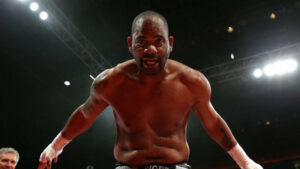
Thompson pummelled Solis around the ring, making him quit on his stool before the start of the ninth round. Solis’ performance was so pathetic that it provoked a savage post-fight tirade from his own promoter, Ahmet Oner, who lambasted his fighter and declared him to be finished.
Solis was last seen in the ring in September 2016 outpointing journeyman Aleksandar Todorovic over eight depressing rounds. He looked every inch his alias and not in the sense of having lightning speed and agility; a galaxy away from the man who set the boxing world alight as an amateur.
#4. Edwin Valero
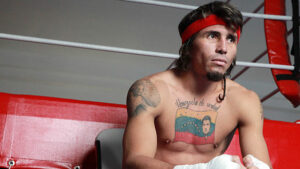
Venezuelan Edwin Valero was a whirlwind of savagery in and outside of the boxing ring during his short life. He departed as a two-weight world champion with a perfect 27-0-0 record and all 27 victories coming by way of knockout, with his first 18 victories all coming in the first round, breaking a century-long boxing record in the process.
As his quality of opposition increased, so did the rounds, but the outcome never changed; a punishing Valero victory inside the distance. Valero’s profile rose greatly within his country after capturing the WBA super featherweight title in 2006 and he even became one of the favourite sportsmen of Venezuelan president Hugo Chavez, whose image Valero had tattooed on his chest.
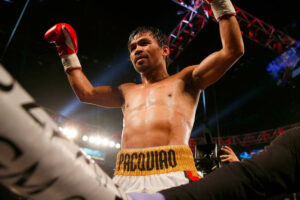
Those who witnessed Valero in action, in the gym and in the ring, such as current Ring Magazine editor, Dougie Fischer, tipped him for boxing stardom and as a future Manny Pacquiao opponent.
He was reputed to have manhandled several world champions in sparring, and right up till his final bout – a one-sided beat-down of future world champion Antonio DeMarco – his boxing skills were steadily improving. However, the power possessed in his fists remained his ultimate equaliser.
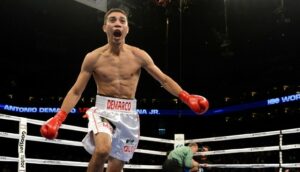
Yet those same fists were also responsible for inflicting appalling domestic violence against family members over the course of his adult life, fuelled by an addiction to drugs and alcohol. On 18th April 2010, Valero was arrested on suspicion of stabbing his wife to death – a crime which he admitted to police. The following day he was found dead, hanging from his clothes which he had tied to a cell bar.
Valero could have gone down in boxing history as one of its all-time-greats. Instead he went to his grave in ignominy aged just 28 years, a drug-crazed murderer, leaving behind a dead wife, orphaned children and destroyed lives.
#3. Ike Ibeabuchi
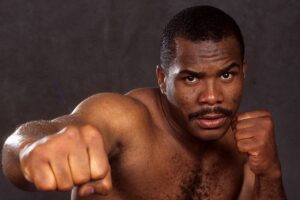
In the mid-1990s, Nigerian-born Ike Ibeabuchi was a heavyweight prospect on the rise. Some say he could have gone on to challenge the domination first of Lennox Lewis and then the Klitschko brothers.
Ibeabuchi was 6 ft 2 and 240 lbs of pure muscle with a Sonny Liston-like demeanour, and could back up his intimidating appearance in the ring.
In a step-up fight against feared fellow heavyweight prospect and puncher, David Tua, Ibeabuchi demonstrated his durability by shaking off Tua’s best bombs and threw back nearly 1000 of his own, an astonishing output for such a big man, winning a deserved unanimous decision in a fight-of-the-year candidate.
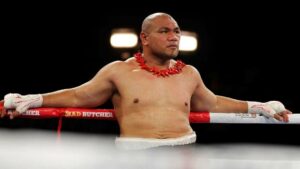
Three fights later, Ibeabuchi stepped up again by facing future heavyweight champion Chris Byrd. Byrd, a slick and speedy fighter, was a completely different proposition to Tua, but Ibeabuchi rose to the occasion again. The first four rounds were competitive, but then came the decisive fifth round.
Ibeabuchi feinted masterfully with his right, before landing a left hook from hell which nearly decapitated Byrd. Somehow Byrd made it back to his feet, only to be sent back down quickly. Again he made it to his feet, only to be driven into the ropes where the referee intervened to save him from taking more punishment.
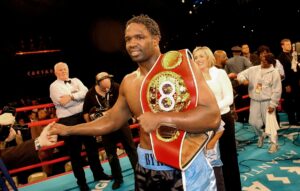
While he was all business in the ring, outside of it Ibeabuchi was being tormented by demons in his head. His behaviour grew increasingly erratic after the Tua fight. He insisted on being addressed as the ‘President’ and made ridiculous financial demands to his promoters. He abducted the son of his ex-girlfriend and crashed the car into a concrete pillar.
Then in July 1999 he sexually assaulted a Las Vegas call-girl, leading to his arrest, trial and eventual imprisonment. Medical experts diagnosed him as suffering from bipolar disorder, confirming the fears of those who had already questioned his fragile mental state.
Ibeabuchi was released from prison in 2015. Despite being 42 years old and 16 years of inactivity, Ibeabuchi declared that he was in-shape and ready to return to boxing. He hired Michael Koncz, Manny Pacquiao’s adviser, to assist with this and there was even talk of him appearing on the undercard of Pacquiao’s next fight in Las Vegas.
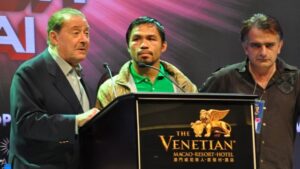
Any chance of an unlikely comeback was killed off however when he violated the terms of his probation within months of his release and was returned to prison where he remains to this day.
#2. Meldrick Taylor
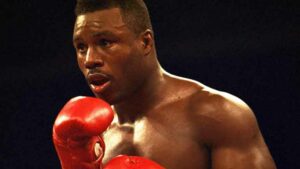
Meldrick Taylor was part of the brilliant class of 84. At the age of just seventeen, he won a gold medal in the featherweight category at the Olympics that year, representing a US squad which included future hall-of-famers Pernell Whitaker, Evander Holyfield and Virgil Hill.
That Taylor was tipped to be one of the best of that illustrious group speaks volumes.
Taylor was blessed with dazzling hand speed, outstanding footwork and blistering combination punching and he exploited all three attributes in a rapid rise to the top of the professional ranks. In just his 21st professional fight, he stopped Buddy McGirt to win the IBF light welterweight title.
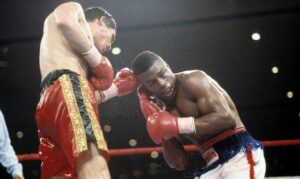
Two years later in 1990, he found himself in a unification bout against a living legend in Julio Cesar Chavez, who held the WBC title. Both men were undefeated, with Chavez holding an incredible 68-0-0 record. The Mexican was widely regarded as the pound-for-pound best fighter in the world and the clear favourite going into the fight.
Taylor was not in the least bit intimidated by Chavez’s reputation. He saw the fight as his coming-out-party, the moment he would be crowned the sport’s next superstar. He was true to his word as he delivered a boxing master-class, nullifying Chavez’s offence with his superior speed and seeming to build an insurmountable lead on the scorecards.
Taylor could not however put a dent in Chavez’s legendary chin and deter him from coming forward. As the fight progressed, the tide started to turn. Taylor was landing more shots, but Chavez was landing the far more damaging ones. By the final round, Taylor was exhausted and his face a swollen, bloody mess. Implored by his team, a desperate Chavez went out in search of the knockout and got it.

With 25 seconds to go in the round, he staggered Taylor with a big right hand and went in for the kill. Another right hand sent Taylor down for the first time in the fight. Taylor was up by the count of six but referee Richard Steele, unconvinced by Taylor’s reaction to his question ‘Are you alright?’ waved the fight off with just two seconds left in the round.
Taylor lost more than just his title and undefeated record that night. He was never the same fighter again after the punishment he took in the ring. Although he moved up in weight and won the WBA welterweight title, he never recaptured his pre-Chavez form.

Successive knockout losses to Terry Norris and Crisanto España and a second stoppage at the hands of Chavez in a rematch ended his career as a world-class fighter. Despite exhibiting worrying signs of brain damage, such as badly slurred speech, Taylor fought on for eight more years after the second Chavez loss, suffering four more losses on the way to men who would not have been fit to carry his gumshield a decade earlier.
Retirement has not been kind to Taylor who was recently reported to be bagging groceries in his native Philadelphia. It’s a sad state of affairs for the former champion who never became the fighter he should have been.
#1. Tony Ayala Jr.
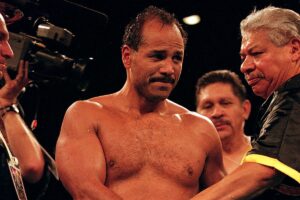
‘The greatest prospect of all time.’ Lofty praise indeed, but these are the words that have been bestowed on Tony Ayala Jr. Ayala, nicknamed ‘El Torito’, the baby bull, was from a boxing family. Both of his brothers also fought professionally and his father, Tony Sr., was a respected trainer.
It was however Tony Jr. who was the family star. The quintessential man-child, he grew up quickly in an environment surrounded by sex, drugs and violence. Ayala dabbled in all three from an early age.
It was boxing which Ayala learnt first though – lacing up the gloves at only 5 years of age – and he proved to be a prodigy, going on to compile a stellar amateur record of 140-8.
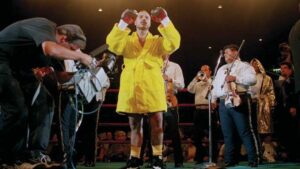
At the age of 14, he sparred with Pipino Cuevas, the reigning welterweight world champion and a future hall-of-famer, ranked by Ring Magazine as one of the 100 greatest punchers of all time. When informed of who Cuevas was, Ayala retorted ‘he ain’t s**t to me’, and proceeded to give Cuevas hell in the ring.
The cracks in Ayala’s life beyond the ring were however already starting to appear. When he wasn’t in the gym, he was drinking heavily, smoking crack and shooting heroin. At the age of 15 he was convicted of sexually assaulting a woman in an attack that was so violent that he broke his victim’s back. He was fortunate to avoid serving prison time, receiving 10 years’ probation instead.
Ayala turned professional in 1980 at the age of 17 and gained a reputation as a big hitter with a brutal streak of knockouts. Ayala didn’t just have power; he had toughness and ring intelligence beyond his years.
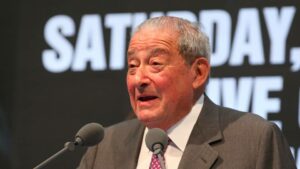
Figures such as Bob Arum, Angelo Dundee and Ayala’s manager Lou Duva all predicted he would become a future champion and star of the sport.
However, he also fought with an uncontrolled rage and a do-or-die attitude. His lack of discipline regularly spilled over in the ring. On one occasion, he spat on a fallen foe. On another, he continued trying to punch his opponent after the referee had intervened to end the contest.
Nevertheless, by 1983 Ayala had worked his way up the rankings and was scheduled to challenge WBA light middleweight titleholder Davey Moore. A big pay-day and the chance to be crowned world champion awaited him. It was not to be.
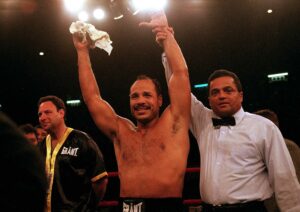
In the early hours of January 1st 1983, an intoxicated Ayala broke into a neighbour’s house and raped her at knifepoint. He was subsequently convicted and sentenced to 35 years in prison.
During his time in prison, Ayala undertook counselling to overcome his anger issues. He revealed that he had been sexually molested as a child and that the resulting shame and inability to speak to anyone about this had fuelled his pent-up rage as he was growing up.
In 1999 he was paroled and resumed his boxing career. He earned $200,000 for his comeback fight, causing a media furore due to the nature of his crimes. Ayala was a balding 36-year-old, ring-rusty and above his best fighting weight, but he still possessed fight-ending power and won six straight bouts by knockout.
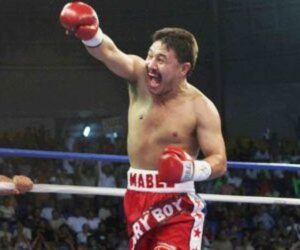
Then his run came to a crushing end at the hands of former champion Yori ‘Boy’ Campas. Ayala shattered his hand in the third round and with it his once-fearsome aura in the ring. Campas laid a beating on Ayala for the rest of the fight until Tony Sr. had seen enough after the eighth round and saved his son from taking any further punishment. It was the beginning of the end for Ayala.
After the Campas defeat, Ayala lapsed into depression and heavy drinking. Further brushes with the law followed; being shot in the shoulder by a young woman after breaking into her home; being charged with having sex with a thirteen-year-old girl; and finally being returned to prison in 2004 for violating the terms of his probation, including driving without a license and possession of heroin and pornography.
Ayala was released for the second time in 2014. Within a year he was dead from an apparent drugs overdose; a sad yet predictable end for a man who could have been one of the greatest of all time but could not overcome his penchant for self-destruction.
Article by: Paul Lam
Follow Paul on Twitter at: @PaulTheWallLam